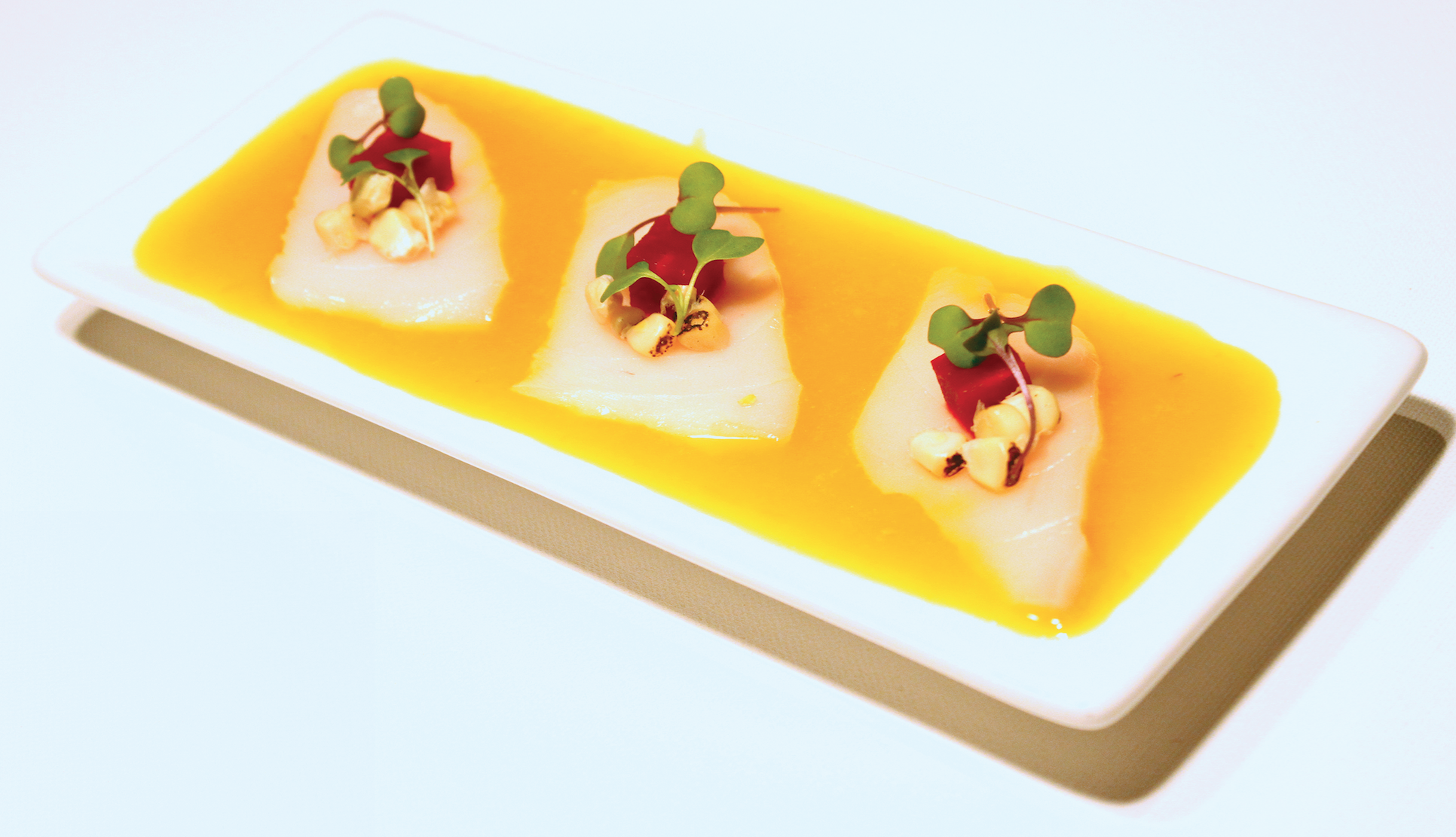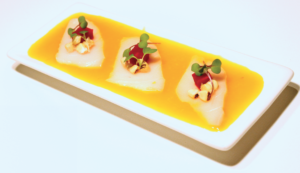By Michael Gardiner
I might not have put Peruvian cuisine on my short list of the world’s great cuisines; at least not until I looked at the closest thing there is to on official list of such things: The San Pellegrino World’s 50 Best Restaurants. Three of The World’s 50 Best are in Lima: Central (4), Maido (13) and Astrid y Gastón (30). To put that in perspective, there are only five on the entire list in all of America. It is, it seems, Peru’s time to shine on the world culinary stage.
Peruvian cuisine is diverse in just about every way. The foundation of the cuisine is the bounty of Peru’s land and sea ranging from the coast to the Andes highlands and Amazonian jungle. The Inca used this bounty to develop a sophisticated cuisine. European immigrants brought their flavors and techniques but West African immigrants did too and the stamp of Asia (especially Japan) on Peru’s culinary culture is particularly evident.
Peru’s national dish is ceviche: raw fish (or par-boiled seafood) cut into bite-sized pieces and marinated in citrus to the point of being “cooked.” Indeed, the Peruvians claim to have invented the dish though so do the Ecuadorians. But in Peru, with that pronounced Japanese influence, ceviche ran up against a distant cousin: sashimi.
[Tiradito of Escolar with Roasted Beet and Corn 4]
The result was glorious. Filtering ceviche through the lens of Japan’s influence yields tiradito. Instead of chunks of fish marinated in lime, sashimi-cut thin slices of fish are sauced at the last minute with an emulsion featuring aji amarilla chiles, lime and aromatics. Aji amarillas are Peruvian chiles with serrano-level heat but a profound fruitiness. The color says “sweet” but the sauce means serious business. The resulting dish has the big flavors of ceviche but the form and purity of sashimi.
For my version I used Escolar, a fish that is often called (more accurate miscalled or mislabeled) “Butterfish,” “Oilfish,” “White Tuna” or “Super White Tuna.” It is an absolutely delicious fish with a deep, savory flavor, meaty texture and gorgeous, pearly-white flesh. There is one drawback. While never labeled so, some call the fish “ex-lax fish.” Escolar cannot metabolize the wax esters naturally found in its diet. As a result, when full portions of escolar are consumed, these wax esters cause gastrointestinal symptoms.
There is a solution, though. Never eat more than six ounces of the fish at a meal. That makes it perfect for the sort of appetizer portion here. If you don’t want to get even that close to taking a risk, though, yellowtail (Hamachi) is an excellent substitute.
I chose the garnishes for my version with the big flavors of and gorgeous color of escolar and the aji amarillos in mind. Roasted beet is sweet and meaty but also has a color that would play off the sauce and the fish. Charred corn, a reference to the way Peruvians serve ceviche gives the dish a bit of texture.
Restaurants like Central, Maido and Astrid y Gastón have put Peru’s cuisine in the world spotlight. This dish will give you a glimpse of its elegance and big flavors. It gives you at least a taste of the culinary DNA with which those restaurants are working.
Tiradito of Escolar with Roasted Beet and Corn
Serves 4
Ingredients:
For the Roasted Beet Garnish
1-2 large beets
1-2 tablespoons extra virgin olive oil
For the Roasted Corn Garnish
- 1 ear of corn, husks and silks removed
For the Tiradito
- 1 yellow bell pepper, seeds and stem removed
- Kosher salt
- 1tablespoon aji Amarillo purée (see Note, below)
- 1tablespoon minced garlic
- 1tablespoon freshly squeezed lemon juice
- 4tablespoons freshly squeezed lime juice
- 5tablespoons chicken stock
- 1 tablespoon soy sauce
- 1 – 1 ½ pounds of Escolar (or Hamachi) loin, skinned and filleted
- Kosher salt to taste
For the Garnish
- Microgreens (cilantro, beet, arugula, basil or other) or fresh cilantro leaves
- Roast the Beets. Preheat the oven to 375° Fahrenheit. Coat the beets lightly with oil, wrap them in aluminum foil, place them on a baking sheet and roast in the oven until cooked through, approximately 45 to 60 minutes. Remove the beets from the oven, unwrap and place them in the refrigerator to cool. When they are cool, peel the beets. The skins should slip right off with little effort.
- Cook the Corn. Meanwhile, if using the microwave/blowtorch method, place the ear of corn in a microwave oven and cook on high for two minutes then turn ears over and microwave another 2 minutes. When cooked, use a blowtorch to scorch the corn’s surface, turning the ears to make sure all sides are charred. Alternatively, if blowtorches just aren’t your thing, skip both of the above steps and char the corn directly on the flame of your gas stove, turning frequently. If you don’t have gas burners you can achieve the same results on a grill.
- Make the Sauce for the Tiradito. Bring a small saucepan of water to a boil, add the yellow bell pepper and boil for fifteen (15) minutes. Remove the pepper from the pot and let it cool before slipping its skin off. Place the pepper and the salt in a food processor fitted with the “S” blade and process until smooth. Add the aji Amarillo puree, garlic, lemon juice, 2 tablespoons of lime juice, chicken stock, soy sauce and pulse until combined. Once the ingredients are combined you can take it to a smooth purée if you like. I, for one, like. Set the sauce aside.
- Cut the Fish. Trim your Escolar loin as you like so that you can ultimately cut three very thin even, uniform slices per serving. Exactly how you go about doing that varies depending on the shape of the piece of fish you acquire. The goal is to have sashimi-thin pieces of about 1 ½ inches by ¾ inch. Using a very sharp and long knife, slice the fish on a slight bias toward the narrow end and lay the slices on a plate, sprinkling the fish lightly with salt. Cover with plastic wrap and refrigerate until ready to serve.
- Prepare the Garnishes. Trim the ball-like round roasted and cooled beet into a big cube. Cut the beet into ½ inch dice. Cut the charred corn off the ear.
- Plate the Dish. Spoon some of the sauce in the bottom of appetizer plates. Place three pieces of fish in a line on each plate. Place one beet cube on each piece of fish, arrange several kernels of charred corn right next to it and top with several sprigs of microgreens or cilantro leaves.
Note: In San Diego, you can get aji Amarillo chiles as a purée (as called for here) or in frozen form at Andrés Latin Market, 1249 Morena Boulevard in the Morena District.











[…] Original article published at http://www.lchaimmagazine.com/feature/badass-kosher-the-beautiful-bastard-stepchild-of-ceviche-and-s… […]